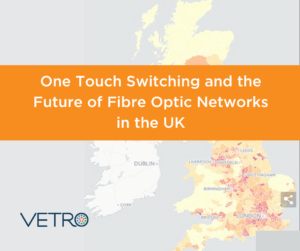Fiber to your Hometown: Broadband as the Fourth Utility.
VETRO FiberMap has participated as an exhibitor at the Broadband Communities Summit for the past five years. This year’s topics were heavily focused on open-access municipal fiber network projects, which drew a crowd of around 1,200 conference attendees.
One of the featured keynote speakers was Susan Crawford, author of the recently-published book, “Fiber: The Coming Tech Revolution – and Why America Might Miss It.” Crawford noted that state regulatory restrictions are relaxing, which has helped ignite over 800 municipal broadband and electrical cooperative fiber projects across the United States. In the following General Session, an entire panel was dedicated to discussing how industry disruption is facilitating rural and municipal access to funding and community fiber.
Municipalities and cooperatives now have more access to technology, equipment, and critical network information than ever before. These resources, combined with lower regulatory hurdles, have enabled the open-access model to gain momentum. While it may not be the right fit for every location, the open-access model allows the municipality to build and own the fiber network for purposes such as fire and life safety, economic development, resiliency, traffic management, autonomous vehicles, etc. In these cases, the municipality hires a private entity to operate the network, and then leases the network to ISPs to compete for business and residential internet service customers. There are also several new financial models available to municipalities for broadband projects, including federal programs, state broadband incentives, hybrid municipal bonding options, interested private capital, and even foundation grants.
These models can only be successful if providers share fiber resources. A recurring analogy overheard at this year’s conference was, “why build a highway for every package delivery service?” Providers are better off sharing a single, extremely dense fiber network.
As expected, there were a few stories of municipal broadband projects that experienced tough financial beginnings. While this is a reality, the networks eventually proved to be a valuable asset to the municipality, and the investment was typically paid off by leasing excess capacity.
The key takeaway from this year’s BBC Summit? If we can better connect sparsely populated, rural areas, we can certainly do it in suburban and urban markets. In many places there’s a new broadband paradigm coming to town: local government stepping in to drive network infrastructure projects and create a foundation for competitive broadband access where incumbent providers have underdelivered or failed.


